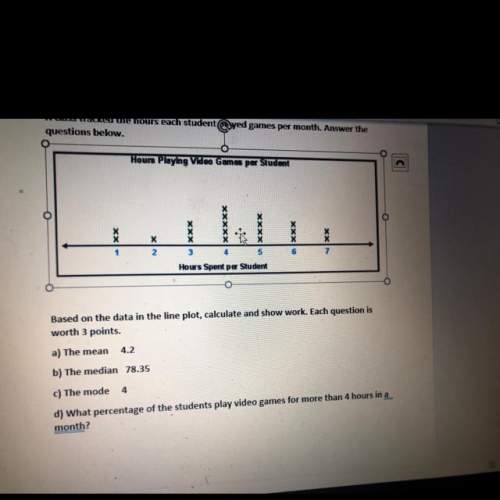
Mathematics, 28.03.2021 06:00 nila49
A plant in Alamo, TN, manufactures complex transformer components that must meet specific guidelines for safety. One such component is constructed to deliver 1,000 volts of electricity. A component creates a critical safety hazard if it absorbs humidity at a level above 3%. Any components that absorb too much humidity will be destroyed. A quality control inspector uses a random sample of components to conduct a hypothesis test with H0: The humidity level absorbed is 3%, and Ha: The humidity level absorbed is more than 3%. What is a Type I error in this context?
A Type I error would result in failing to reject a false null hypothesis. This means the company would believe the humidity level is at most 3%, when in fact it exceeds 3%.
A Type I error would result in rejecting a true null hypothesis. This means the company would believe the humidity level is more than 3%, when in fact it is not more than 3%.
A Type I error would result in rejecting a true null hypothesis. This means the company would believe the voltage delivered is more than 1,000 volts, when the voltage is actually not more than 1,000 volts.
A Type I error would result in failing to reject a false null hypothesis. This means the company would believe the voltage delivered is no more than 1,000 volts, when the voltage is actually more than 1,000 volts.

Answers: 3


Other questions on the subject: Mathematics

Mathematics, 21.06.2019 15:00, ladnerhailey16
Pj is decorating pupcakes for rocky's birthday party. her color scheme is black, purple, and green. she will use this spinner to determine the color of sprinkles on each pupcake. which model shows the probability of randomly landing on each color?
Answers: 3

Mathematics, 21.06.2019 21:50, shay68596
What is the next step in the given proof? choose the most logical approach. a. statement: m 1 + m 2 + 2(m 3) = 180° reason: angle addition b. statement: m 1 + m 3 = m 2 + m 3 reason: transitive property of equality c. statement: m 1 = m 2 reason: subtraction property of equality d. statement: m 1 + m 2 = m 2 + m 3 reason: substitution property of equality e. statement: 2(m 1) = m 2 + m 3 reason: substitution property of equality
Answers: 3

Mathematics, 22.06.2019 01:00, NetherisIsTheQueen
Which of the following statements is true? a. the irrational number system is not closed under multiplication, because the product of two irrational numbers is always a rational number. b. the irrational number system is not closed under multiplication, because the product of two irrational numbers is not always an irrational number. c. the irrational number system is closed under multiplication, because the product of two irrational numbers is always an irrational number. d. the irrational number system is closed under multiplication, because the product of two irrational numbers is always a rational numbers. reset submit
Answers: 1

Mathematics, 22.06.2019 02:00, torquishag
Tanyss's house has 25 windows. her brother has washed 22 of the windows. what percent of the windows has her brother washed?
Answers: 1
You know the right answer?
A plant in Alamo, TN, manufactures complex transformer components that must meet specific guidelines...
Questions in other subjects:





English, 21.05.2020 05:03








